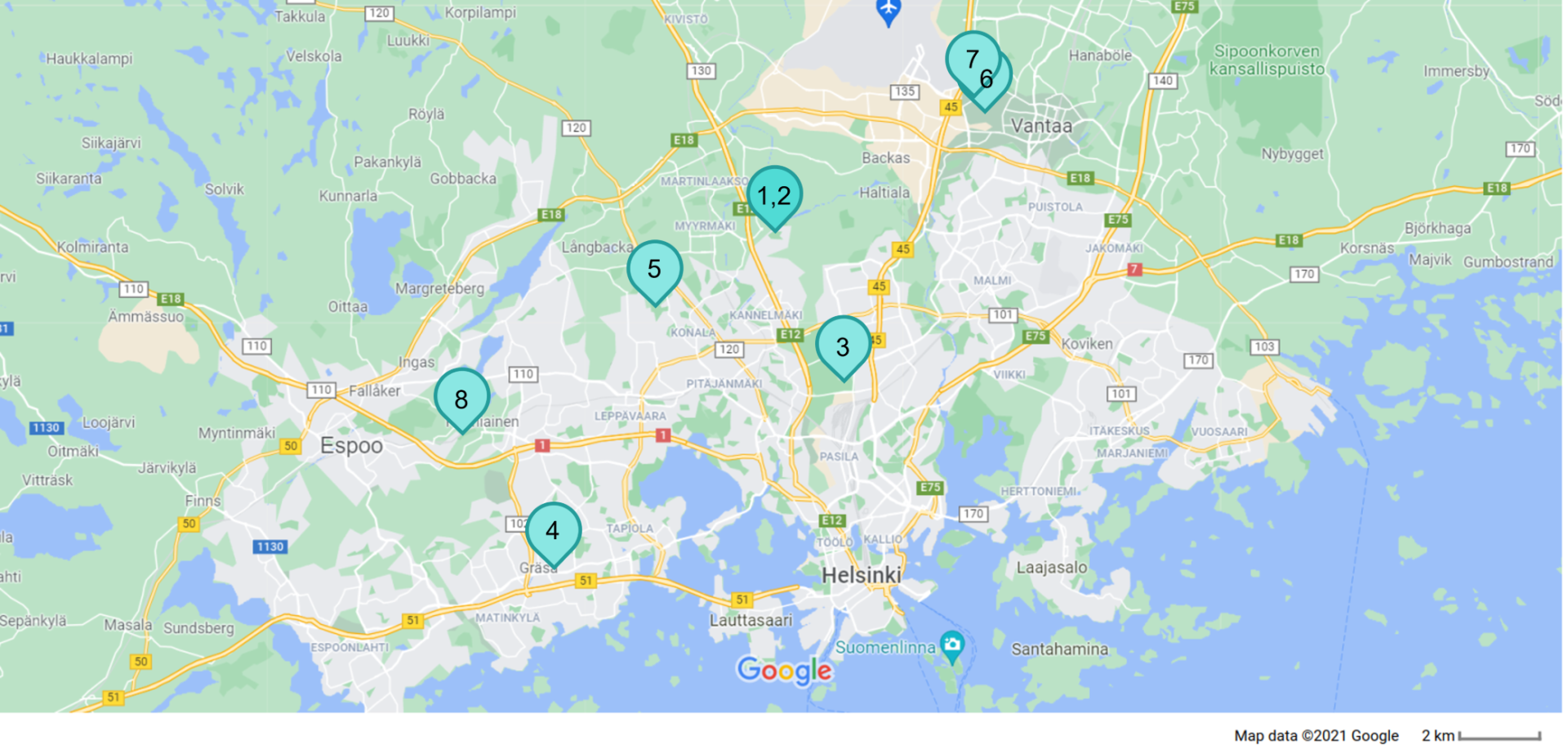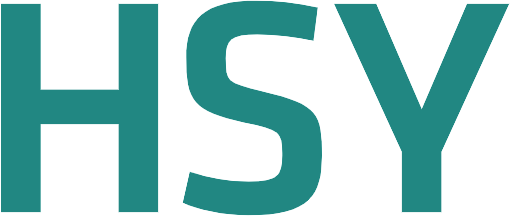Nature-based solutions for stormwater management in the Helsinki Metropolitan Area, Finland – Prerequisites and good practices
Information
Helsinki Region Environmental Services Authority
30.12.2021
Nature-based solutions for stormwater management in the Helsinki Metropolitan Area, Finland – Prerequisites and good practices
Helsinki Region Environmental Services Authority
P.O. BOX 100
00066 HSY
Tel +358 9 1561 2110
Faksi 09 1561 2011
www.hsy.fi
Author: Niina Kautto
Further information:
Maaria Parry, maaria.parry@hsy.fi
Cover photo: HSY/ Mikko Käkelä
Methodology
Scope
This research was guided by the RAINMAN project Task 5.4. description: “In this task the role of green infrastructure and vegetation will be studied as part of sustainable stormwater management. The aim is to identify good practices and solutions to stormwater management in urban areas and also as protection of freshwater resources especially from increasing stormwater amounts.”
This was translated into a report introducing “alternative green solutions” to reduce negative impacts of stormwater targeted at the four land use types defined in the project. Such solutions were considered to include various types of “green”, “natural” or “nature-based” stormwater management structures. A common term “nature-based solutions” was adopted in the report as an umbrella term to refer to more sustainable approaches to stormwater management (see Section 3.3.).
As this task was assigned in the project to the Helsinki Region Environmental Services Authority HSY, the Helsinki Metropolitan Area was selected as the area under investigation. Eight stormwater management solution sites were selected from the initial larger set of sites in the HMA based on the discussions and interviews with the cities' staff as well as findings in the literature (see Table 1 and Fig. 8). The selection founded upon the following criteria:
- Local scale, aboveground, ground level solutions (e.g. mainly excluding green roofs);
- Different types of solutions in terms of systems, time built, location (residential areas vs. industrial areas), land use types, size, innovation, visibility;
- Structures in public areas;
- Research or monitoring data available to determine the performance of these solutions;
- Recommended by the cities' staff members; and
- Not/ less photographed earlier.
With regard to the land use types, they were not defined in detail at the outset of the project. Hence, the selected sites could be categorised to exhibit more than one land use type depending on their location. Land use types were discussed in the RAINMAN project meeting in March 2021. Challenges and solutions to stormwater management in different land use types were also workshopped with the project members in the meeting in November 2020 (Table 2, Appendix). These discussions helped refine the research scope.
Number | Name | City | Land use type | Building year | Management type | Solution |
|---|---|---|---|---|---|---|
1 | Fannynkallio residential area, Kuninkaantammi ecological district | Helsinki | Developing/ densely built-up area | 2019 | On source management, conveying, detention & infiltration | Permeable surfaces, green roofs, rain gardens |
2 | Helene Schjerfbeck’s park, Kuninkaantammi ecological district | Helsinki | Green or natural/ developing area | 2018 | On source management, conveying, detention & infiltration | Streams, channels, swales, detention basins and wetlands |
3 | Maunulanpuisto park | Helsinki | Green or natural area | 2015 | Detention & infiltration | Detention basins, biofiltration area, ditch |
4 | Merituulentie road | Espoo | Developing/ densely built-up area | 2018 | Detention & infiltration | Biofiltration swales |
5 | Huhuilijanpuisto park | Espoo | Green or natural area | 2013 | Detention & infiltration, conveying | Wetland, ditch |
6 | Koisotie road snow reception area | Vantaa | Green or natural area | 2013 | Conveying, detention & infiltration | Biofiltration area, wetland |
7 | Meiramitie road | Vantaa | Densely built-up area | 2014 | Detention & infiltration | Biofiltration swales |
8 | Skvatterbäck creek | Kauniainen | Green or natural area | 2009 | Conveying, detention | Creek |

Materials and methods
The research underpinning this report is based on a literature review, interviews and photography of selected sites. The research was carried out mainly in February – November 2021. The review of literature included various types of peer-reviewed and ‘grey’ literature, such as cities’ stormwater management programs and other relevant publications (e.g. maps), publications related to nature-based solutions, relevant project reports, journal articles, theses as well as the RAINMAN project material. Given the increasing amount of literature published on the topic of nature-based solutions and urban water management, this review is not intended to be exhaustive but provides a snapshot of current research, practices and lessons learnt in the field.
The literature review was complemented by semi-structured interviews with staff members of all four HMA cities. These four interviews were carried out online in June – July 2021; one of them was a group interview. Altogether seven persons were interviewed. In addition to the interviewees, six other persons were more informally discussed with on the phone, and/or consulted by email to ask for more clarifications in the latter half of 2021. These all are called informants, and they were deemed key persons dealing with stormwater management and/or climate change adaptation related issues in their cities. Therefore altogether 13 people acted as informants:
- City of Helsinki: one interviewed; two consulted by email and/or phone;
- City of Espoo: one interviewed; one consulted by email and/or phone;
- City of Vantaa: one interviewed; three consulted by email and/or phone;
- City of Kauniainen: four interviewed.
The interview questions were structured around the initial research questions presented in Section 2.1. The interview recordings were transcribed and translated from Finnish to English, and then categorised and analysed according to the initial research questions. Due to the rich interview data, most of it was included in the report.
In addition, a photographing plan was developed to depict the selected solutions. The sites were visited by the photographer mainly in August – September 2021. The author visited the Helsinki sites with the photographer to guide the photographing process. Aerial photos were taken from all except the Vantaa sites as the proximity of the airport prevented the drone to be used.

